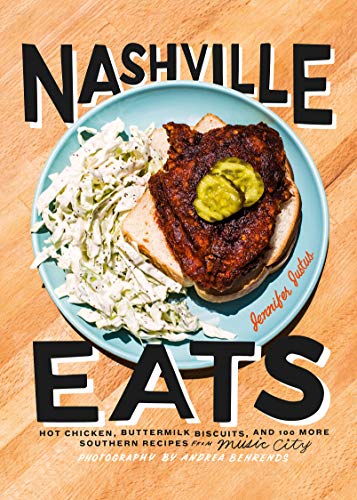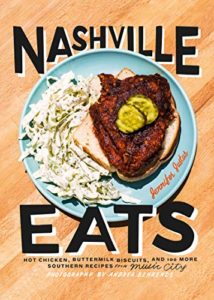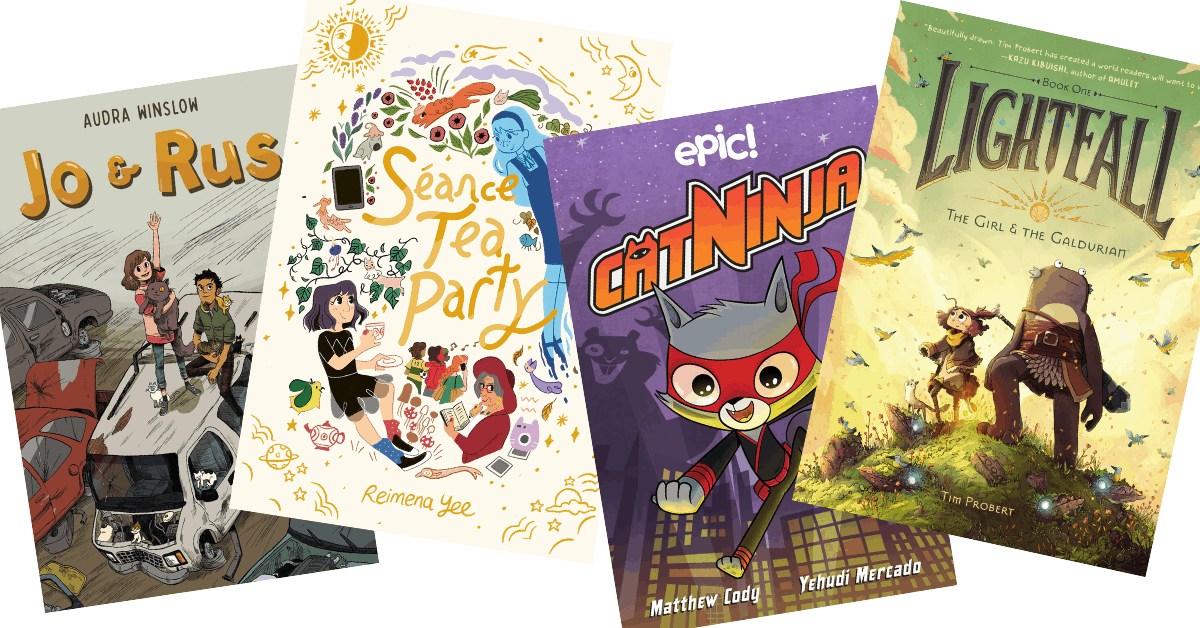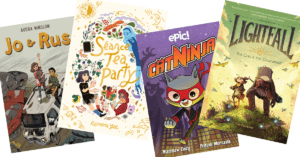Tag Archives:from the library

2
JunIt’s a Vibe: Slow-Paced Books
 As a librarian, I often get questions from folks who are looking for books that are fast paced and have lots of action. Most people seem keen to avoid getting bogged down with wordy description or intricate world-building and get straight to the plot. While I also love an action-packed story, living and reading through a global pandemic has given me a new appreciation for slower paced fiction.
As a librarian, I often get questions from folks who are looking for books that are fast paced and have lots of action. Most people seem keen to avoid getting bogged down with wordy description or intricate world-building and get straight to the plot. While I also love an action-packed story, living and reading through a global pandemic has given me a new appreciation for slower paced fiction.
I think I speak for many when I say that I would really like a break from living through these “unprecedented times.” Because I am the sort of person who can get swept up by the emotion surrounding current events, I keep my news reading to a limited time period in the morning, when I can chat with my husband and keep myself grounded before anxiety takes over. When I read at night, I avoid the news in favor of books that keep me calm and help me relax after a busy day. Regardless of genre, I’ve found that slower-paced novels that focus on the interior life of the characters instead of a high-octane story line really allow me to unplug and recharge myself. Slower paced books often focus on the interior psychology of a character or on observations about everyday existence to make their points. It can be hard to capture exactly what makes these books so absorbing but, as young people say, it’s a vibe.
It’s pretty easy to sell an exciting book to a friend, a coworker or a library patron. A cool premise or an unusual plot twist usually spark the interest of other readers, but it can be pretty tricky to describe why a slower-paced book is awesome. At a recent staff event, a coworker asked me about Klara and the Sun by Kazuo Ishiguro, which I had just finished reading. My response was, “I had to lie down after I finished reading it.” When she followed up by asking me to summarize the plot, I really struggled! The main premise of Ishiguro’s latest novel is a lonely teen girl purchases an AI robot to be her friend while she convalesces during a mysterious illness. The book’s episodic structure and reliance on an unreliable first-person narrator make it tough to explain exactly what happens, but my initial reply was more about the heavy emotional impact of Ishiguro’s evocative writing. Klara’s internal reflections and attempts to understand everyday human behavior are a powerful meditation on what it means to love another person.
Sweeping multigenerational dramas are another favorite subgenre in the slow-paced book category. In these books, it’s not that nothing happens, but often that so many things happen which make it difficult to summarize for a book recommendation. One of my favorite reads from 2019 was Pachinko, a beautifully told look inside the lives and identities of a Zainichi (ethnically Korean) family living in early 20th century Japan. Sunja, the daughter of disabled Korean fisherman falls for the empty promises of a wealthy Japanese businessman and ends up journeying to Japan in search of a better life for her son. The richly drawn characters’ experiences of the harsh realities of a xenophobic society lead the reader to think about how one decision to change the path of an entire family for years to come.
Similarly, Yaa Gyasi’s debut novel, Homegoing, is another example of a multigenerational slower read. This compelling book takes place over 300 years and organizes each chapter by a character in a successive generation from a family torn apart by the slave trade in Ghana. Two half sisters are born in two villages of 18th century Ghana: Effia lives a life of luxury as an Englishman’s wife in Cape Coast Castle while her half sister Esi is imprisoned as a captor of the slave trade in the Castle’s horrific dungeons. Effia’s side of the family wrestles with the many effects of British colonialism for generations, while Esi’s journey takes her descendants through slavery in the American South, the Civil War and the Great Migration.
The last type of slow-paced novel features in-depth character studies. The titular character of Colm Toibin’s Nora Webster embarks on a journey of self-discovery after years of devotion to her husband ends abruptly when he dies. Nora’s struggle with grief and becoming an independent woman in small town Ireland isn’t monumental or action packed but it does illuminate how our circumstances can change in the blink of an eye. Nora’s everyday decisions, like whether or not to sell her summer house, reveal how we can refashion our lives and carry on, even after a life altering loss.
Instead of loss, Lily King’s second novel, Writers and Lovers, contemplates one woman’s quest to be creative. Casey Peabody’s life is going nowhere. Reeling from her mother’s death, she lives in a garage while working a grueling waitress job in Cambridge, MA during the late 90s. Her unfinished novel and the desire to create hang over every bad decision she makes, including falling for two very different men. As she grapples with the mundane demands of paying the bills and being someone’s girlfriend, she stays determined to finish her novel and be the successful writer she’s always dreamed of being. Once again, Casey’s outer life seems to go in circles, but inwardly her growth as an artist and as a person is inspiring.
Books don’t have to be fast-paced to be exciting. Slowing down with character driven fiction can be a great way to take a break from daily life and explore an experience through someone else’s eyes. So next time you see the words “ponderous” or “descriptive” when reading a book review, don’t let that put you off! Slow-paced books can drag you off for an equally thrilling adventure. It just won’t be a quick one.
Kate Tigue is the Head of Youth Services at the Morrill Memorial Library. Look for her article in the May 20, 2021 issue of the Transcript and Bulletin.

28
MayProud to be Here
 I recently moved into my position as the Adult Services Librarian at the Morrill Memorial Library after working in nearby Sharon, Mass. for about five years. When I told people at the Sharon Public Library about my new job in Norwood, the typical response was a wide-eyed, “Oh, you’re going to work in the city!” I’m not convinced about the term “city,” but Norwood is definitely bigger and more bustling, and I was very excited about the prospect of joining MML’s staff as part of the Norwood community.
I recently moved into my position as the Adult Services Librarian at the Morrill Memorial Library after working in nearby Sharon, Mass. for about five years. When I told people at the Sharon Public Library about my new job in Norwood, the typical response was a wide-eyed, “Oh, you’re going to work in the city!” I’m not convinced about the term “city,” but Norwood is definitely bigger and more bustling, and I was very excited about the prospect of joining MML’s staff as part of the Norwood community.
But I’ll be honest; underneath my excitement, I was nervous about the new job, too. It’s not that I felt unprepared or anxious about the work ahead of me, and certainly all of the staff members I met when I came to interview were friendly and welcoming. Nevertheless, I’m nonbinary–I use they/them pronouns, and my gender expression is fluid from day to day, in ways that some people find difficult to parse–and unfortunately there is no telling how a new workplace or community will react to that in practice. In a time when misinformation about trans people abounds and laws aimed at barring trans youth from participating in sports, removing LGBTQ+ content from K-12 classrooms, restricting gender nonconforming people’s ability to use public restrooms, and limiting trans patients’ access to health care are making their way through state legislatures throughout the country, it can feel daunting to be out and visibly trans. Massachusetts is one of the most advanced states in regards to LGBTQ+ policies, yet the so-called LGBTQ+ “panic” defense is still allowable in courts and the RMV only started allowing an X marker on drivers’ licenses as of May 2019. Even in affirming spaces with well-intentioned allies, accidental misgendering happens, paperwork and policies are chock full of binary language, and I often find myself positioned as a de facto educator as the only (visible) trans/nonbinary person in the room. And like I said before, not everyone knows how to react to my genderfluid presentation. Which is all to say that, yes, I felt a little cautious.
I’m thrilled to say that my trepidation was unfounded. The Library and the Town of Norwood have taken steps to be proactively supportive of me, my colleagues have been extraordinarily conscientious, and I’ve felt empowered to bring my authentic self and perspective to the table. Since arriving, I’ve had the opportunity to dive into a number of projects, but the one that is most near and dear to my heart is the upcoming slate of programs we have planned in celebration/observance of Pride Month. The programs are the result of a collaboration between the Adult and Children’s Services departments and include two Pride-inspired Take & Make children’s crafts; “The Pineapple Project,” an original play about gender creativity for kids on June 10th; two programs featuring local drag performers, including a story hour for families on June 16th and a panel discussion for adults on June 24th; a presentation by the Norwood Historical Society’s President, Dr. Cashman Kerr Prince, about Norwood’s historical dandy, F. Holland Day, on June 21st; and more. To see the full offering of programs and/or to register, visit the Library’s calendar: norwoodlibrary.org/morrillcalendar.
My experience in Norwood has been excellent thus far, and for that I feel fortunate. I also recognize that I am quite privileged in this and other regards. The reality is that trans, nonbinary, and gender nonconforming individuals still face discrimination in ways both large and small at work and/or in their lives more broadly. I think that one of the major reasons why discriminatory attitudes and laws toward trans and nonbinary people persist is due to a lack of widespread education around the simple matter of what it means to be trans, nonbinary, and/or gender nonconforming. For example, take the issue of trans athletes in sports. At a very cursory glance, arguments in support of “protecting” cis athletes might seem compelling. But as soon as you examine the issue more critically, the answer becomes much less cut-and-dry, revealing insidious tendrils of transphobia and a lack of real scientific evidence. Kirstin Cronn-Mills wrote an excellent book back in 2016 anticipating this very question; check out LGBTQ+ Athletes Claim the Field: Striving for Equality for a thorough, well-researched take.
Likewise, I encounter a lot of people who are familiar with the concept of a nonbinary gender identity, but who have never actually met or interacted with anyone who is publicly known to be nonbinary. And it’s certainly true that, up until recently, our society simply didn’t have the language to describe gender nonconformity, fluidity of gender expression, or what being nonbinary meant. Luckily that is now changing, and people are beginning to write guides to help others navigate terms and ideas. Stuart Getty’s graphic nonfiction book, How to They/Them: A Visual Guide to Nonbinary Pronouns and the World of Gender Fluidity, is an excellent, concise example that provides information, insight, and actionable advice for interacting with gender nonconforming individuals. If you’re not into visual art and prefer a more textbook style, try Lee Airton’s accessible primer, Gender: Your Guide, instead.
Of course, in my opinion, there is no better way to become familiar with different perspectives, voices, and experiences than through the lens of fiction. While the pool of books depicting nuanced, contemporary queer experiences is still relatively small, there is a growing number of authors contributing to this body of literature. Some notable recent examples of trans and nonbinary characters in literature include: Pew by Catherine Lacey, which is the study of a small town tested by the presence of a peaceful stranger whose gender-ambiguity nevertheless becomes a source of resentment and strife; Felix Ever After by Kacen Callender, a YA novel told from the perspective of a queer teen questioning his gender identity and finding his place in the world; and The Empress of Salt and Fortune by Nghi Vo, a fantasy novella in which an itinerant nonbinary scribe records the story of an exiled empress. If you’ve already read these, or you just want more great titles, the ALA maintains a “Rainbow Book List” with plenty of additional recommendations: glbtrt.ala.org/rainbowbooks.
If you’re ever in the Library, feel free to stop by the Reference Desk and say hello. I’m proud to be working here in Norwood.
Hilary Umbreit (they/them) is the Adult Services Librarian at the Morrill Memorial Library in Norwood, MA. Look for their article in the May 27, 2021 issue of the Transcript and Bulletin.

14
MayOde to Hot Chicken
 Warning: if you’re hungry or in danger of becoming hungry, proceed with caution.
Warning: if you’re hungry or in danger of becoming hungry, proceed with caution.
If you’ve visited a restaurant or ordered out in the past year, you may have noticed an item appearing on menus around the Northeast called “Nashville hot chicken.” What’s this? How is it different from regular spicy chicken, or buffalo sauce? Doesn’t this restaurant know we’re nowhere near Nashville?
Readers, friends, foodies: believe the hype. I had the great privilege of attending the Public Library Association Conference in Nashville, TN in February 2020 and have experienced firsthand the glory that is Nashville hot chicken… in fact I experienced it several times in several days. While I haven’t found a New England restaurant serving Nashville hot chicken that quite lives up to the real deal, I will keep hunting through local menus and sampling new versions because the real McCoy is just that good. If not life-changing, it was at least palette-changing.
My coworkers and I arrived in Nashville and did what any hungry traveler would do – ask the Lyft driver where they like to eat and what iconic dish they recommend we have to try before leaving Nashville. Time and again the answer we received was Nashville hot chicken, and everyone we asked had their own local spot they claimed made the best spicy bird in town. Realize that at this point in my life, I didn’t really care for fried chicken – at all. While I liked spicy foods, I could barely stand to eat a chicken wing. I shrugged, thinking I might as well try it as long as I’m here, and as long as everyone else was trying it…
We made our way to Hattie B’s Hot Chicken Restaurant, a Nashville-based chain that specializes in hot chicken and one of the major purveyors of the dish. Full disclosure, when it comes to hot chicken, I’m in the Hattie B’s camp. According to the book Nashville Eats by Jennifer Justus, the original hot chicken was created by Prince’s Hot Chicken Shack in the 1930s, and this local chain is still very much thriving today.
Enough suspense – what is it like to eat hot chicken? The chicken is served atop a slice of thick white bread, garnished with bright green dill pickle slices, and ideally accompanied by southern food sides of your choice such as collard greens, black-eyed pea salad, or cornbread. The chicken could be a mix of wings, leg, or breast, and arrives piping hot and rusty red-orange in color. Breaded and coated with spices, the chicken should glisten with just a bit of sauce from the skillet. A fork and knife are required for this meal, and cutting into the hot chicken releases a steamy aroma of spices.
Hot chicken can be ordered mild, hot, or extra hot, with extra hot being recommended for only true lovers of spicy cuisine. With a crispy crunchy outside and a moist juicy inside, the dish is so much more than spicy heat, however. Hattie B’s executive chef, John Lassater, shared in The Southerner’s Cookbook that the spice blends for hot chicken are typically closely-guarded secrets but that cayenne pepper, onion powder, and garlic feature heavily in the flavor profile. My own impression was that a depth of herbal flavor supported the spicy heat of the bird, and the moistness of the meat was not just grease from the frying process. As Lassater points out, brining the poultry in buttermilk and vinegar is a vital step, and sets the recipe apart; that recipe can be found in The Southerner’s Cookbook, by the way.
You don’t have to enjoy spicy food to appreciate that southern chefs are champions at making fried chicken. Rebecca Lang wrote an entire cookbook with variations on the cuisine called Fried Chicken: Recipes for the Crispy, Crunchy Comfort-Food Classic. Lang breaks fried chicken into three different categories: skillet fried, deep fried, and combination fried. While Lang classifies Tennessee Hot Chicken (clearly with a nod to Nashville) as a deep fried variety, but others contend that hot chicken should be skillet fried. Lang also takes the time to describe at-home chicken frying in detail, as does Edward Lee in Smoke & Pickles, so that home chefs can tackle the frying process with guidance.
Want to try making Nashville hot chicken at home but skip some of the calories? While the genuine article is beyond delicious, I concede that it is most definitely not healthy. One of the library’s ebook lending services, Hoopla, has an ebook called Air Fry Genius by Meredith Laurence. The book has a recipe for Nashville hot chicken. While I’ve never tasted hot chicken from an air fryer, if you have one of these appliances then the recipe is worth a try.
If your appetite for southern cooking has been whetted you might want to check out these or other southern cuisine cookbooks from our collection, such as Back Home with the Neelys, Southern Plate, or volume one or two of Magnolia Table by Joanna Gaines. If I haven’t piqued your curiosity about Nashville hot chicken yet, then take a note from the author of Nashville Eats, “In a city of stars, Nashville’s hot chicken burns brightly… And more than just a heat thing, hot chicken stays with you. It can alter a person’s state of being, drawing him back for more.”
Liz Reed is the Adult and Information Services Department Head at the Morrill Memorial Library in Norwood, MA. Look for her article in the May 13, 2021 issue of the Transcript and Bulletin.

7
MaySpring 2021 Graphic Novel Roundup
 Being a children’s librarian has many perks – I get to read to kids! I get to sing and dance with them! I get to buy books and resources for families! I get to wear silly clothes, like my Dragons Love Tacos shirt, or my cat skirt, or my rainbow dress to work! I can create programs like paint nights, and it is all part of my job. But maybe the best part is that when I am reading tons of kids books or graphic novels, and get a side-eye from another adult, I get to explain that I have to read these books! It’s my JOB!
Being a children’s librarian has many perks – I get to read to kids! I get to sing and dance with them! I get to buy books and resources for families! I get to wear silly clothes, like my Dragons Love Tacos shirt, or my cat skirt, or my rainbow dress to work! I can create programs like paint nights, and it is all part of my job. But maybe the best part is that when I am reading tons of kids books or graphic novels, and get a side-eye from another adult, I get to explain that I have to read these books! It’s my JOB!
Not that anyone needs an excuse to justify what they are reading. I just like to spin it a little. I would be reading these books either way, and getting to tell people about my job is honestly a bonus. (Just don’t tell me you “never read” or ask why libraries still exist “when there is Google.”)
So if you are an adult, and you want suggestions on the newest mysteries or romances, I am unlikely to have any personal recommendations. What I do excel at is recommending what to read after your child has read all the Raina Telgemeier books ten times.
Let me tell you about some of my most recent reads:
First up, these books are for younger readers who have moved beyond the basic early readers and are reading longer books. For fans of Dog Man, Cat Ninja by Matthew Cody is an Epic! Originals book that was previously only available on Epic!, a digital reading site, that most children access through a school account. Cat Ninja is a regular cat by day, superhero by night! Protector of Metro City, he fights all the fiendish villains that threaten the peace. Evil slugs, robot dogs, and his nemesis, Master Hamster, are no match for Cat Ninja! Agent 9 by James Burks has a similar adventurous feel, this time with a spy cat who has a habit of acting before thinking through the consequences. Because she is so reckless, Agent 9 has been sidelined by the Super Secret Spy Service for destroying more things than she is saving. But being a spy is everything to her, so Agent 9 vows to change her ways if she can just have one more chance. Readers will definitely relate to the trouble Agent 9 continually gets into because she forgets to stop and think. Can Agent 9 learn from her mistakes and stay a super spy?
For a slightly more advanced reader, like fans of the Hilo series, Bear by Ben Queen is a beautifully illustrated book about a service dog who loses his sight. What is a dog to do when he loses his reason for being? Bear doesn’t know who he is if he isn’t helping Patrick, his beloved owner who is a blind technician. Bear leaves on a journey to fix his sight, and finds that everyone has beauty and worth, no matter what they can or can’t do. Readers who enjoy the more realistic story lines, like the Babysitters books, might like Jo & Rus by Audra Winslow, a book about two kids finding a connection despite an age difference. Jo is in middle school, and she is bullied for being different and living in a trailer with her grandma. Rus is a highschooler who is Puerto Rican whose family owns the town junkyard. When Rus finds Jo skipping school, he sees a kindred spirit, and the two become friends. Rus encourages Jo to attend school, and to join a club to find kids with similar interests. He introduces her to his friends and family, and allows her to see a future where she can thrive with friends who may be outside the mainstream. I was initially unsure about a plot that revolved around an older boy helping a younger girl, but it is a very wholesome brother/sister type of relationship, and Rus never tries to change Jo. He just helps her realize there are many options to life, and we can find happiness by embracing who we are, but also by trying new things. A little more fantastical, but with real, relatable issues, is Seance Tea Party by Reimena Yee, in which Lora finds herself drifting apart from her middle school friends. They want to do more ‘adult’ stuff, like talk about boys, but Lora still wants to dress up and have out of this world adventures. Determined to be herself, Lora decides to have a seance tea party with her imaginary friends and discovers a ghost named Alexa. Stuck forever at 14, Lora and Alexa become fast friends and Lora is thrilled that her new friend will never outgrow her. But, of course, time moves on and Lora inevitably does grow up. The story is sweet, but also packs real heart as the reader learns Alexa’s back story and sees Lora struggle with her friends.
Moving on from ghosts to gods, Oh My Gods by Stephanie Cooke is a cute story based on Greek mythology. Karen moves to Greece for a year to live with her eccentric dad Zed, and enrolls in the local high school. Not exactly thrilled to be uprooted, Karen takes a little while to notice that her new friends all happen to be the gods and goddesses of legend. Oh, and her dad Zed is really Zeus! Cooke brings everyone together as the teens have to solve the mystery of who keeps attacking the students of Mt. Olympus Junior High. Can they find out which student did it, before it’s too late?
In Girl Haven by Lilah Sturges, Ash’s mom has been gone a few years now, but he and his dad have just moved into her family home. Ash makes some new friends at school, and they come back to his house to hang out. When he shows them the cool clubhouse in the backyard, none of them are prepared to be sucked into a fantasy world Ash’s mom had only told him stories about. If Koretris is a place meant as a haven for girls, what does it mean that Ash was able to travel there? Can Ash face what happened to his mother, and his own feelings? With his new friends’ encouragement and looking within himself, Ash finds out who he really is.
And finally, Lightfall by Tim Probert is a fantasy adventure story, great for readers of Amulet or 5 Worlds. Bea has always lived with her adopted grandfather, the Pig Wizard, and assisted him in creating tonics for the villagers. While she is out finding supplies, she bumps into Cad, a giant Galduarian – a frog-like creature thought to be extinct. He is looking for Pig Wizard to help him find his people, but, when they return home, he is gone. Now Bea and Cad must find her grandfather and find out what happened to the Galduarians before darkness covers the land. Will the Pig Wizard have the answers? Or are Bea and Cad carrying some of the answers themselves?
These are just some of the newer graphic novels we have. Not to mention new titles in a few popular series, like the new Dog Man: Mothering Heights, Babysitters Club: Claudia and the New Girl, and more. There is something for everyone, and if you need a recommendation, just ask!
Nicole Guerra-Coon is the Assistant Children’s Librarian at the Morrill Memorial Library, in Norwood, MA. Look for her article in the May 6, 2021 issue of the Transcript and Bulletin.

29
AprIt’s Okay to Not Be Okay
 “Good times, bad times, you know I’ve had my share.”
“Good times, bad times, you know I’ve had my share.”
When Robert Plant sang those words on the opening track of the self-titled Led Zeppelin album first released in 1969 he could not have imagined anything like the past 14 months we’ve all had to endure, living through this COVID-19 pandemic. Plant, Page, Jones and Bonham were clearly borrowing from a rich blues tradition, and I often take heart in the sentiment in the classic song, “Born Under a Bad Sign,” that Albert King famously recorded in 1967, just two years before the Zeppelin Bad Times. “If it wasn’t for bad luck, I wouldn’t have no luck at all.”
How do we get through hard times? We start by recognizing that times are indeed hard. It is popular to put on a brave face and always answer the question “How are you doing?” with “I’m good, how are you?” and never expect anything less than positive in reply. But things are not always good. We all know this. You certainly don’t need me to remind you. What I want to encourage you to do is make sure to deeply listen to yourself and treat yourself kindly. Then extend this kindness to the people closest to you – your partner, your kids, your parents, those people who know the real you. Listening closely is how we develop deep empathy for each other, which is essential to our collective survival as a species.
I didn’t start with advising you to be kind to strangers and animals. Of course you should do that too. But as my father regularly reminded me, puppies are cute for a reason, it’s nature’s way to make sure they get taken care of to become grown dogs. It can be harder to be kind to grown adults you don’t know, but I think it is even harder to be kind to ourselves and those closest to us, because our expectations are so much higher. That’s why it is so important to live the reality that it is okay to not be okay. It is okay to not always succeed. Bonnie St. John shared a wise realization she gained competing at the highest level: “(P)eople fall down, winners get up, and gold medal winners just get up faster.” Studies of healthy communities highlight the importance of resiliency (see Eric Kilenberg’s Palaces for the People, published in October, 2020, for an in depth study of how libraries play a part).
Often the hardest part about getting up is figuring out where to start. Of course, it depends on where you are. Always dial 911 during an emergency. The National Suicide Prevention Lifeline provides 24/7, free and confidential support for people in distress, prevention and crisis resources for you or your loved ones, and best practices for professionals. Their number is 800-273-TALK (8255). Not sure if you are that low? If you’re unsure, please pick up a phone and call. It is much better to call early. It can be amazing how low our lowest moment can be and you don’t have to explore these depths alone. Would you rather text with someone? Text 741741. You can simply say “I’m not okay” and a volunteer counselor, who is supervised by a licensed, trained mental health professional, will be right there to personally help you.
The library is also here for you. None of us are alone. We may feel alone and isolated, and indeed we may physically be more isolated than ever before in our lives, but here at the library we can help you research and connect with practicing professionals and peer support groups that are completely qualified to help. We place enormous value in confidentiality so you can conduct any research you need to do without any fear of anyone else finding out. There is no shame in taking care of yourself and others, but at the library only you get to choose how public you are with that process, not anyone else. We also have lots and lots of books, videos, and more we can help you discover to accompany you on your journey. We can help provide some escape from the daily trials and tribulations of modern life, and we have experts waiting to help you figure out what will work best for you.
I’m frequently asked about my favorite books and I don’t like to answer that question, because what I like may not resonate with someone else. However, there are several books that have personally helped me get through some hard times. Atul Gawande’s Being Mortal: Medicine and What Matters in the End was first published in October, 2014. It is a profound look at how to prioritize quality of life, especially when things are at the final stages of living. Here at the library we have this title available in a lot of different formats (physical, digital, audio…) including some on Hoopla, the online service that provides instant access, with no waiting. Another book that I’ve found incredibly comforting is Abigail Thomas’ A Three Dog Life which was first published in September, 2007. It is a warmly written memoir about Abigail’s experiences after her husband sustained permanent brain trauma after he was hit by a car. Forced to adapt to a life alone, she found solace at home with help from friends, family and dogs.
As the days turn warmer, we all get our vaccinations and things start to feel more hopeful than they have for months, it can be especially disheartening when we have moments of darkness. The day after I got my second shot I was exceptionally exhausted and emotionally drained like I hadn’t experienced in a long time. It was amazing when I noticed the cloud had passed, and a great reminder that sometimes we don’t get better without help. I recall T.S. Eliot’s opening to The Waste Land “April is the cruellest month…,” and the jazz standard it inspired, “Spring Can Really Hang You Up the Most.” Better days will come. Please be kind to yourself, your family and friends, and all our co-inhabitants of this beautiful blue orb we call home.
Clayton Cheever is the Director of the Morrill Memorial Library in Norwood, MA. Look for his article in the April 29, 2021 issue of the Transcript and Bulletin.
